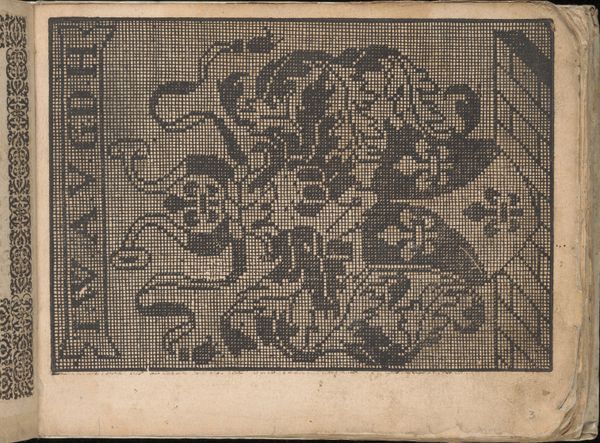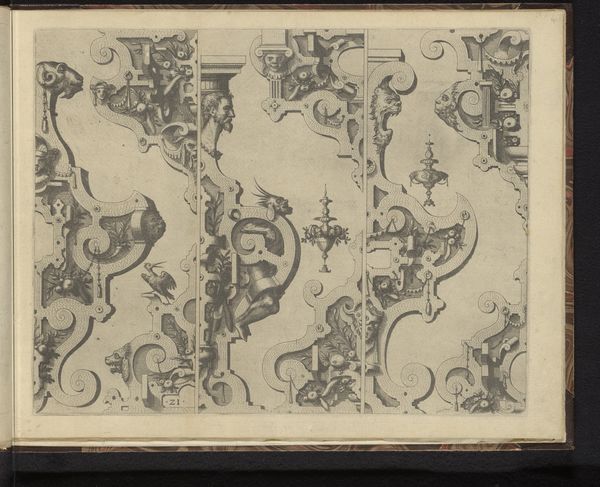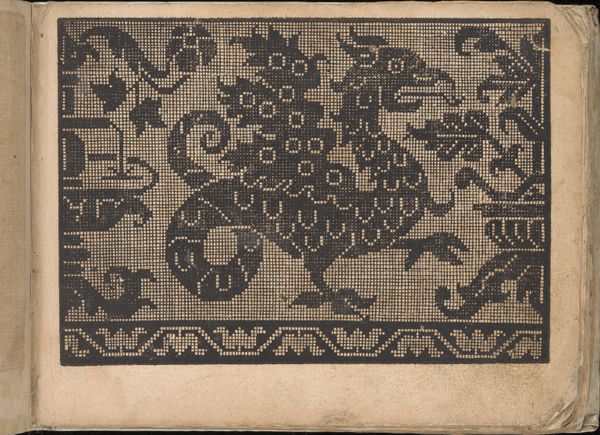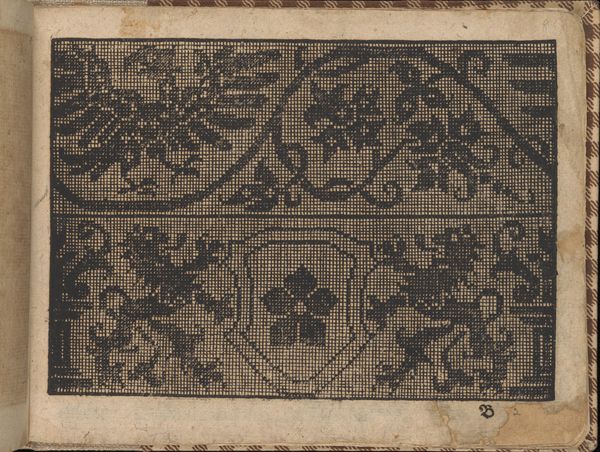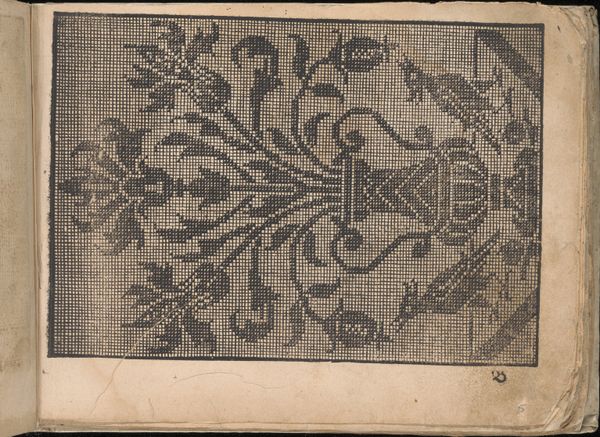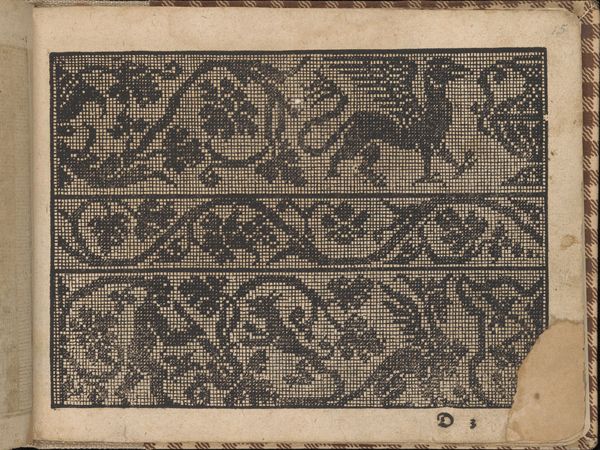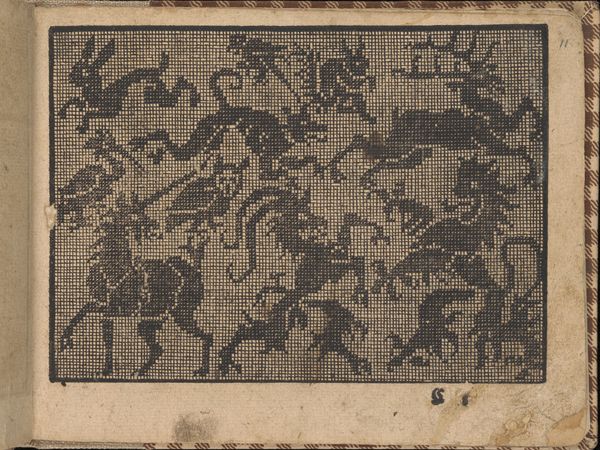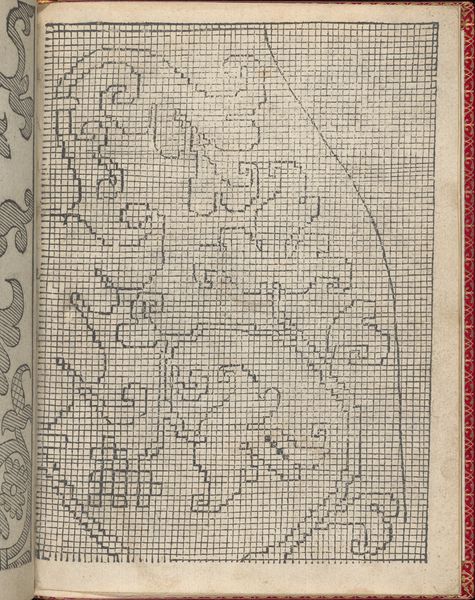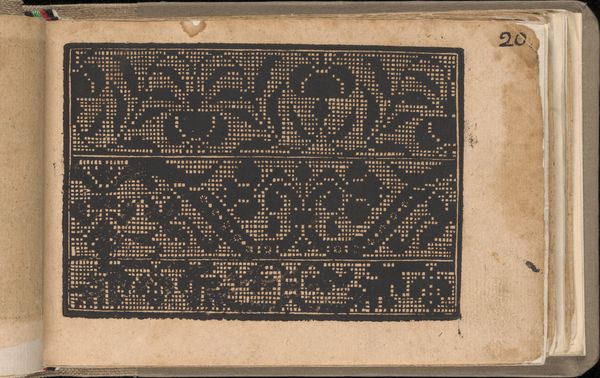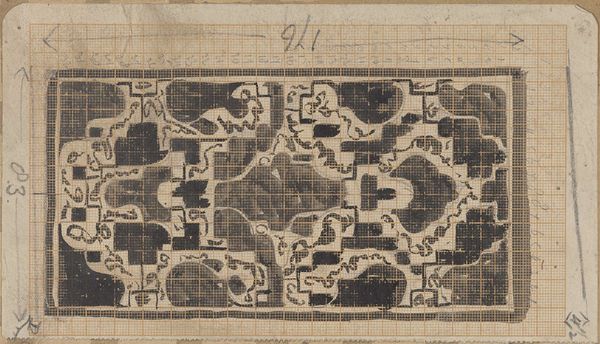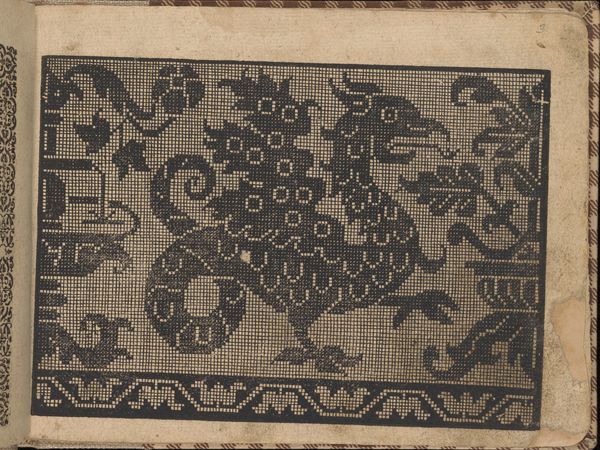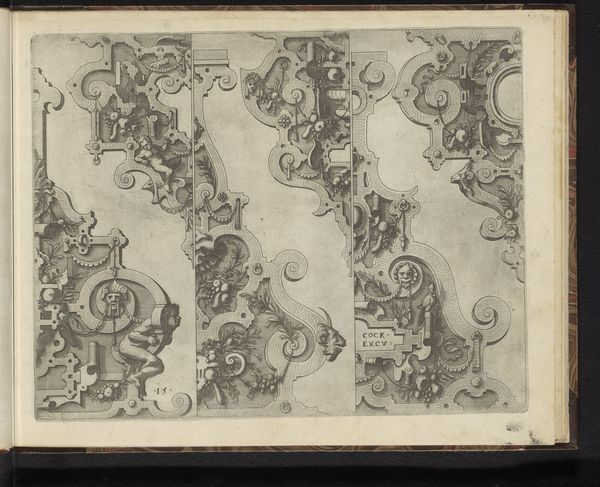
drawing, print, woodcut
#
drawing
# print
#
11_renaissance
#
geometric
#
woodcut
Dimensions: Overall: 6 5/16 x 8 1/4 in. (16 x 21 cm)
Copyright: Public Domain
Editor: So, here we have a page from Bernhard Jobin's "New Künstlichs Modelbuch," dating back to 1600. It's a woodcut print, very detailed with what looks like patterns meant for needlework or lace making. The density of the cross-hatching is mesmerizing. What jumps out at you when you look at this page? Curator: The striking aspect for me is its direct link to material culture and the domestic sphere. This isn't "high art" in the traditional sense. It's a manual, a pattern book – an instrument for production. It points to the labor of women, and the techniques of textile production within the household economy of the time. Editor: That’s interesting. So you’re saying its value isn't in some symbolic meaning, but rather its practical use? Curator: Exactly! Consider the means of production – the woodcut itself, a relatively accessible printing method. How were these books distributed? Who had access to them? Were they considered a form of capital for women of the time? Understanding this reveals the complex economic and social forces at play. Look at the grid that organizes the pattern. Doesn’t this reflect the labor-intensive and measured processes inherent in needlework and lace making? Editor: It really shifts my perspective, thinking about it less as just a pretty picture and more as evidence of women's work and skills, mass produced for common usage. I hadn’t considered the material implications of the image. Curator: Precisely. And what about the material of textiles at the time? What fibers were being consumed, traded, and what part did these patterns play in that system? It’s a rich network of materiality waiting to be explored! Editor: I hadn’t considered looking at the art this way. It brings a completely different dimension. Curator: Indeed. By centering material processes, we unveil the often-invisible hands and economies that shaped this piece, revealing the fascinating connections between art, labor, and everyday life.
Comments
No comments
Be the first to comment and join the conversation on the ultimate creative platform.
